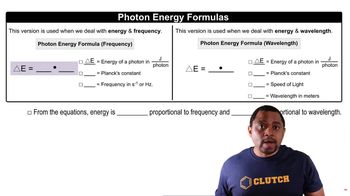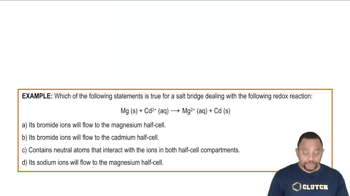Here are the essential concepts you must grasp in order to answer the question correctly.
Photon Energy
Photon energy is the energy carried by a single photon, which is directly proportional to its frequency and inversely proportional to its wavelength. The energy of a photon can be calculated using the equation E = hν, where E is energy, h is Planck's constant, and ν is frequency. This relationship is crucial for understanding how different wavelengths of light correspond to different energy levels.
Recommended video:
Wavelength and Frequency Relationship
The relationship between wavelength and frequency is described by the equation c = λν, where c is the speed of light, λ is the wavelength, and ν is the frequency. This means that as the wavelength of light increases, its frequency decreases, and vice versa. Understanding this relationship is essential for converting photon energy into the corresponding wavelength of light.
Recommended video:
Frequency-Wavelength Relationship
Cadmium Telluride in Solar Cells
Cadmium telluride (CdTe) is a semiconductor material commonly used in solar cells due to its suitable bandgap energy, which allows it to efficiently absorb sunlight. The bandgap energy determines the range of photon energies that can be absorbed, influencing the wavelengths of light that can be converted into electrical energy. Knowing the bandgap energy of CdTe helps in calculating the corresponding wavelength of light that can be utilized in solar energy applications.
Recommended video:
Galvanic Cell Components Example
 Verified step by step guidance
Verified step by step guidance


